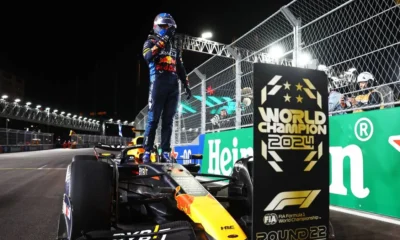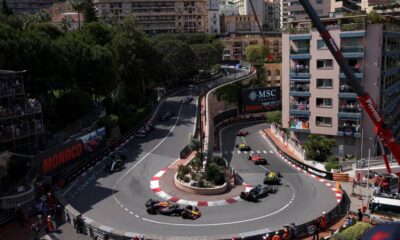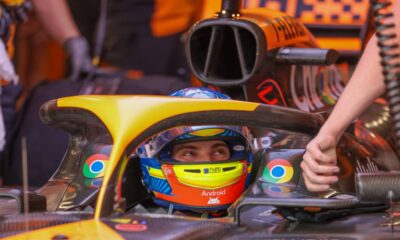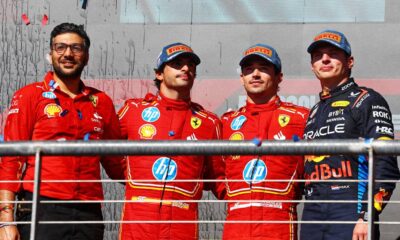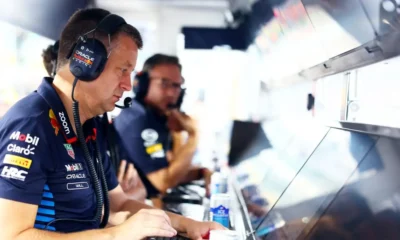Motorsport
Panasonic Toyota Racing or When Politics Interferes Too Much in Sport. What is the story of the Japanese team in F1?
The Panasonic Toyota Racing team’s performance in Formula 1 is a story of folly, a kind of typical Japanese mentality and an inability to change their beliefs for the needs of the world’s least predictable sport. A team that, in an ideal setup, could have been at its best has not won a single victory in 7 years in Formula 1.
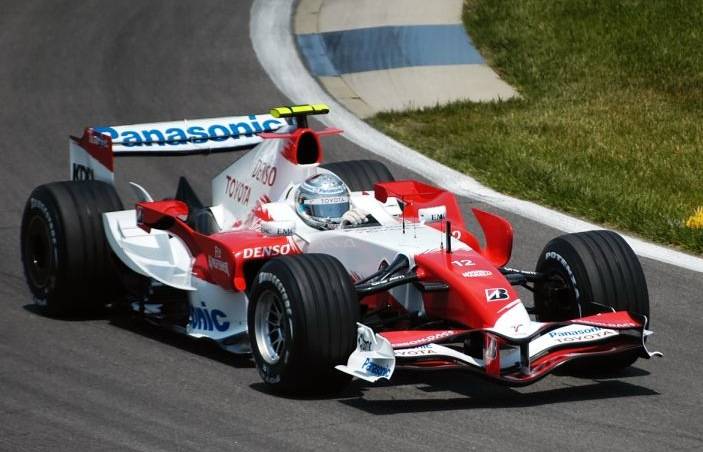
The Panasonic Toyota Racing team’s performance in Formula 1 is a story of folly, a kind of typical Japanese mentality and an inability to change their beliefs for the needs of the world’s least predictable sport. A team that, in an ideal setup, could have been at its best has not won a single victory in 7 years in Formula 1.
Toyota first announced its entry into Formula 1 in 1999, with the decision finally confirmed by Toyota Motor Corporation President Hiroshi Okuda.
The team, called Panasonic Toyota Racing, was created virtually from scratch with the philosophy that the team would raise its own people and not take employees from other teams. But that’s what brought Toyota to its knees, especially in the early days of F1, at least in terms of car development.
This factory team was assembled in a way that few had done before. Toyota decided to keep its base in Cologne, Germany, and also moved a huge number of staff from its previous racing operations. But they hadn’t had the slightest experience of F1.
Unlike other manufacturers, Toyota took up the challenge of building its own race team, rather than entering the world of motorsport as a mere powertrain supplier or buying a stable outright.
Before its big entry into F1 in 2002, the Japanese giant dominated the WRC and was also active in the sports car series. Toyota had plenty of motorsport experience and was only going to “upgrade” those skills to the world of F1, with all development taking place in Cologne, where Toyota was based.
But Formula One is a completely different world. Toyota’s project was, at least in its early days, a typical display of folly.
Entering Formula 1
Toyota’s very first season in Formula 1 was a prime example of why most new teams fail, not just at their start, but throughout their time in F1. And somehow things never went according to plan for the Japanese constructor.
Disastrous testing of a newly developed monopoly, corporate squabbles coupled with a not-so-functional team policy and a desire to follow the corporate culture rather than bow out as a rookie to one of the world’s most challenging and least predictable sports.
These aspects alone are enough to make a team not only unsuccessful, but completely burnt out. Fortunately, the latter was not exactly the case for Toyota.
For the queen of motorsport, however, this is a very familiar story. A giant car manufacturer gets seduced by the glamour of Formula 1, only to be hit by the brutal truth that often slaps the team really hard, or when an ambitious car company takes a bigger bite than it can chew.
The philosophy of a Japanese car company
However, former F1 drivers Mika Salo and Allan McNish, who were with the team back in 2002, recently spoke to Motorsport Magazine about Toyota’s early days.
“Not everyone was used to doing things at the pace that Formula 1 requires. They insisted on the team working and continuing in the spirit of a corporate culture, more in the Toyota way than the F1 way. There were a lot of new people on the team from rallying and endurance racing, very few experienced ones,” Salo told Motorsport Magazine in an interview.
“When we went to Melbourne for the first race of the season, I think there were less than a handful of people who had been in a Formula 1 team before. Mika and his engineer (Humphrey Corbett) were basically the two most experienced people in the team,” McNish adds to Sal’s claim.
Toyota’s race engineer at the time, Dieter Gass, goes on to explain the approach the Japanese carmaker wanted to take in Formula 1, virtually adding to the words of the two drivers mentioned above.
“The aim was to get into F1 without people who had no experience of the queen of motorsport. They kept saying that we must honour that philosophy and continue to work as they had always been used to at Toyota and not take staff away from the Formula 1 teams.
Of course, a lot of work processes flowed from that philosophy. However, I myself attended many meetings where the company spirit was used – creating various countermeasures instead of simply reacting to the problem when things went wrong,” explains Gass.
Although Toyota was very well funded, it didn’t take long for the inevitable problems, some bigger than others, to emerge as a result of the Japanese carmaker’s high expectations, according to Gass.
The first car – the TF101
Ahead of the 2002 season, the Japanese designer decided to undertake an unprecedented big-budget testing programme. Toyota even decided to simulate several race weekends in 2001, with drivers completing more than 3,000 laps (over 21,000 kilometres).
During these tests, the drivers worked and drove a prototype car called the TF101, which was so bad that Salo once called it his own – “a piece of ho**a”.
“The first car was really, really, really bad and it was hard to work with. On the very first real test day at the Paul Ricard circuit, something went wrong with the suspension of the car on the straight (Mistral) and I broke my back in three places. I was out for three months at that point,” Salo describes his scary experience.
Toyota TF102
Subsequently, the team was literally saved by former Minardi engineer and designer Gustav Brunner. He was given the green light to scrap the existing car plans and start all over again with the TF102.
Although this monoposto also had its flaws, the great engine was able to offset the TF102’s negatives. “We had a reliable car, or rather a reliable engine,” McNish recalls. Even in his opinion, the engine made up for some of the car’s faults. So Toyota had something to bounce back from – a foundation.
The 2002 season
Panasonic Toyota Racing scored points in the first race of the season in Australia. The Finnish driver finished in sixth place, for which Formula 1 awarded one point at the time. McNish also came very close to scoring points in Malaysia. However, he was unable to overtake Felipe Massa in the Sauber in the race and finished seventh – without a point.
Toyota thus scored another point in the third race in Brazil when Salo again finished sixth. It should be noted that nine drivers, led by Massa, Fisichella, Barrichello and Trulli, failed to finish this race in 2002.
However, no further points were scored by the Japanese team in 2002. Even with only two points, however, Toyota finished not last in the Constructors’ Cup, but tenth. Arrows and Minardi also scored the same number of points that year.
Although Toyota had a reliable car, drivers often complained of performance problems, poor handling, downforce and therefore understeer. And unfortunately, the team was unable to solve these problems quickly and effectively enough. This, of course, created a lot of pressure, as the Japanese carmaker wanted results, and lots of them.
Salo admitted in the next stage of the interview that he had a pretty good relationship with Toyota. But these, he said, were often damaged by people recruited to the team by the carmaker itself – a textbook example of bad philosophy and over-politicisation.
2003 and 2004 season, Sal’s disgust
The team was still focused on developing a car for 2003 during the 2002 season. And although it may sound harsh, we must say objectively that this is the first thing the Japanese carmaker has done right after engaging engineer Brunner. It was at this time that all the performers realised that they would have to start doing things differently.
Even though the fault at the time was clearly on the side of the car and the great politicking, Toyota decided to replace both of its pilots. So they brought in Olivier Panis and Christian da Matta.
” I really hope they will struggle a lot with the new car. But I’m glad I’m not there anymore. It’s the same thing over and over again. I’m glad I’m gone, I couldn’t take it anymore. They kept asking us why I was braking ten metres before a corner before, say, the Williams drivers. And I’d always answer – because otherwise I’d end up in the wall! Too much politics.”
Thanks to early work on the car for the 2003 season, Toyota was a little better off the following year. Da Matta picked up ten points, Panis six. Anyway, we should note that F1 has changed its scoring since 2003. As in previous years, the driver scored ten points for first place.
However, F1 made a change in the second place scoring, with drivers getting eight points, not just six. The elite eight then scored points at the end of the Grand Prix, so the third place driver received six points, the fourth five and finally the eighth place driver scored one point.
With 16 points, Toyota was therefore eighth in the Constructors’ Cup ahead of Jordan and Minardi.
Panasonic Toyota Racing continued to benefit from its experience. However, none of the existing drivers had driven a full season. Da Matta was replaced by Ricardo Zonta in the thirteenth race of the season in Hungary, while Panis did not enter the last races in Japan and Brazil. His place was taken by Jarno Trulli.
Season 2005
The Italian driver was replaced in 2005 by Ralf Schumacher, who had previously raced for the Williams team. Toyota continued its good work in the 2005 season as its drivers recorded their first major successes.
Trulia scored the team’s first podium finish when he finished second in the second race of the season in Malaysia. He recorded the same result in the following race in Bahrain. Trulli scored another podium in the Spanish Grand Prix, where he crossed the finish line third in the standings. Ralf Schumacher also scored a podium for the team at the Hungaroring in Hungary.
Schumacher even took pole position on home soil in Japan, but finished the race in eighth place. The Panasonic Toyota Racing team nevertheless finished the season in an encouraging fourth place.
In the drivers’ championship, Schumacher was sixth (45 points), while Trulli finished seventh with 43 points. Overall, Toyota came away with 88 points in 2005.
2006 and 2007 season
The Japanese constructor had hoped for a similar performance in the following season, but the opposite was true. It was a very difficult season for the team, as the new car was not as strong as in the previous season. Ralf Schumacher scored his first podium for the team in the second race in Australia, where he finished third after nine drivers retired.
However, Toyota’s points scoring was poor throughout the year and it was not until the second half of the season, due to an improvement in performance, that Toyota was able to score important points. In the end, the Japanese stable collected 35 championship points in the Constructors’ Cup to finish sixth, one point behind fifth-placed Sauber.
It didn’t get any better the following year, quite the opposite. Toyota had a very good qualifying pace, with Trulli qualifying in the top ten on 10 of 14 occasions. However, the race pace of the Toyota monoposts was considerably worse and the best results were two sixth places from the US Grand Prix (Trulli) and Hungary (Schumacher). With 13 points, Toyota again finished in sixth place.
2008 season – return to the podium
The 2008 season finally saw the much-anticipated improvement, with a more reliable and powerful monoposto, allowing the team to return to the podium battle. However, Ralf Schumacher left the Japanese team and was replaced by Timo Glock.
A glimpse of impending podium success was Trulli’s fourth place in Malaysia. Glock took another fourth place for Toyota, a few races later in Canada. And in the following round in France, it finally came again at the Magny-Cours circuit – Trulli finished third and returned Toyota to the podium!
In the next two Grands Prix, Toyota experienced a lull in results, but in the Hungarian Grand Prix, Glock finished second – another podium finish. Glock also finished just below the podium in Singapore, where he eventually claimed fourth place. Another very good result was recorded by Toyota in Japan, where Trulli finished fifth.
In the last race of the season in Brazil, Glock finished sixth and Trulli eighth. Toyota nevertheless rounded off a great season in fifth place with 56 points.
2009 – the last season in Formula 1
2009 was the last year Toyota competed in Formula 1. The Japanese designer managed to build a very solid car, but according to Gass, it lacked one very crucial aspect – performance. Despite this, Trulli and Glock still recorded decent results this season.
Third place in Australia (Trulli), third and fourth place in Malaysia (Glock, Trulli), third place in Bahrain (Trulli), fourth place in Turkey (Trulli), second place in Singapore (Glock) and another second place in Japan (Trulli). The bottom line is that Toyota finished on the podium five times in 2009.
This season, the team finished fifth in the Constructors’ Cup with 59.5 points, while Trulli and Glock also finished in the top ten in the Drivers’ Championship. However, despite decent prospects for the future, Toyota announced its retirement from Formula 1. Its pilgrimage in the queen of motorsport lasted seven years.
So how can we assess Toyota’s performance in F1? “Initially, everyone struggled with what Formula 1 required and what the carmaker itself wanted to continue. The philosophy and the mentality, the importance of people. Over the years, Toyota has moved closer to the best, but the long-term plans have always been too ambitious. And above all, they wanted to do all the work in Germany,” McNish said of Toyota’s actions.
Gass then added in the above interview that at key moments when Toyota really could have been close to the best, the team’s efforts were thwarted by the company’s attitude. A case in point was in 2006 when F1 switched from V10 to V8 engines.
Objectively, we can say that due to mentality and beliefs, the Japanese carmaker always had a big problem to adapt and did not give the team the necessary support. Yes, Toyota did pick up a few successes in the form of thirteen podium finishes. But it hasn’t won a single victory in seven years.
In 139 F1 Grand Prix starts, Toyota has amassed 278.5 points, and its best finish came in 2005, when it also scored the most points in its short Formula One history.
F1, Toyota Gazoo Racing, Motorsport Magazine

